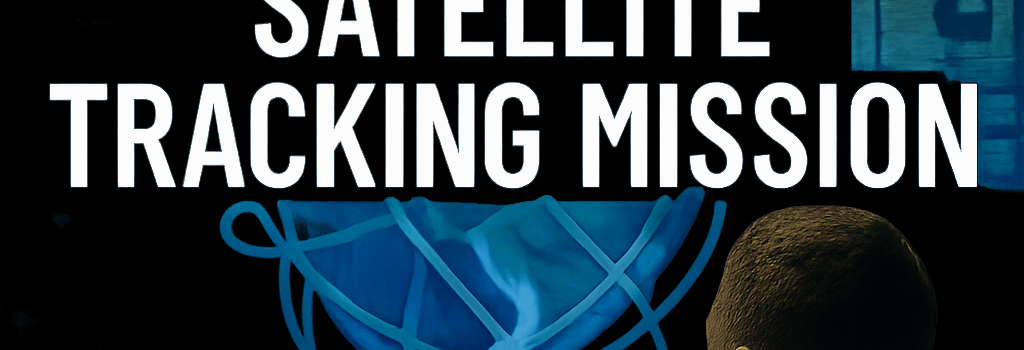Inside the Space Force’s Satellite Tracking Mission

Introduction
The U.S. Space Force’s Space Domain Awareness (SDA) mission has entered a new era. With more than 50,000 trackable objects in low-Earth orbit (LEO) and a launch manifest that now exceeds 100 missions per year, the demand for real-time, precise tracking has never been higher. Mission Delta 2—formerly known as the 18th and 19th Space Defense Squadrons—is on the front lines, routinely shifting to high-alert status when non-cooperative launches occur.
Mission Delta 2 and the Challenge of Non-Cooperative Launches
The Scale of the Problem
Each week, SpaceX alone lofts dozens of Starlink broadband satellites. Allies share flight plans and orbital elements for these cooperative launches. China, Russia, Iran and North Korea, by contrast, seldom publish precise payload manifests or target orbital parameters. That opacity introduces risk: could a new payload be designed for rendezvous, inspection, or even a kinetic or directed-energy attack on U.S. assets?
Sensor Network Architecture
Mission Delta 2 relies on a globally distributed sensor network combining:
- Ground-based phased-array radars operating in the X- and S-bands (8–12 GHz) with revisit times below 60 seconds.
- Electro-optical telescopes paired with high-frame-rate CMOS trackers, capturing milliradian-level angular resolution.
- Commercial RF intercept systems that detect telemetry uplinks from launch vehicles and satellites in UHF (225–400 MHz) and S-band (2–4 GHz).
- On-orbit SDA demonstration satellites equipped with GPS-synchronized lidar altimeters for precise conjunction analysis.
Preparing for the Worst: The “Find–Fix–Track–Target” Paradigm
Intelligence Integration
“We begin with open-source indicators—NOTAMs, maritime and airspace warnings—but quickly fuse in classified intelligence,” explains Col. Raj Agrawal, former commander of Mission Delta 2. As part of the U.S. Intelligence Community, the squadron taps SIGINT and imagery feeds to refine launch windows, predicted azimuth, and potential payload mass.
“On a non-cooperative launch, we posture joint and allied forces within minutes,” Agrawal said. “Our goal is to mitigate risk to warfighters who depend on space-based PNT (positioning, navigation, timing), ISR (intelligence, surveillance, reconnaissance), and SATCOM.”
Tactical Mission Planning
At weekly mission-planning briefs, captains and NCOs from the Space Operations Command, the Space Systems Command’s Missile Warning Delta, and allied liaison officers run through branch and sequel plans. They assign sensor tasking, designate priority tracks, and simulate “what-if” orbital maneuvers up to 48 hours ahead of each launch.
- Identify potential threat vectors: inspection satellites, on-orbit interceptors, or electronic-attack payloads.
- Assign sensor coverage windows and real-time tasking authorities.
- Posture kinetic and non-kinetic response options under U.S. Space Command ROE.
Emerging Technologies in Space Domain Awareness
Accelerating sensor throughput and analyst-in-the-loop automation are key priorities for SDA. In 2025, the Space Force fielded the StellarNet AI Processor, a purpose-built GPU cluster for on-site track correlation and anomaly detection:
- Real-time fusion of radar and optical tracks using a 5 ms latency middleware bus.
- Deep-learning classifiers trained on 15 years of orbital behavior to flag “hostile intent” maneuvers—station keeping vs. close approach.
- Edge-compute nodes at KS-7 and RAF Fylingdales enabling autonomous re-tasking of PSR-3 radars.
Dr. Elaine Chen, Chief Architect at AI4Space, notes, “Automated track correlation is reducing our median response time from minutes to seconds, critical during fast-paced launches.”
Collaborative Frameworks and Data Sharing
Recognizing that space is a global commons, Mission Delta 2 has signed bilateral SDA sharing agreements with five partner nations—including Australia, Japan and France—in the past 18 months. Shared data streams include:
- Real-time orbit ephemerides via secure UDP multicast.
- Threat assessments and anomalous maneuver flags in STANAG-4760 format.
- Joint exercises like Teamspace Guardian to rehearse cross-domain incident responses.
“Transparency builds trust,” says Lt. Gen. Julia Ramirez, commander of Space Operations Command. “When allies contribute radar and optical data, we fill coverage gaps and improve collective SSA [space situational awareness].”
Future Threats and Policy Recommendations
As low-cost launch proliferates and small-sat clusters double in number by 2030, collision risk and intentional close-approach operations will climb. Key recommendations include:
- Mandating real-time telemetric beacons on all orbital vehicles, encrypted but broadcast to authorized SDA nodes.
- Developing an International Space Traffic Management (ISTM) regime under the UN Committee on the Peaceful Uses of Outer Space (COPUOS).
- Accelerating on-orbit demonstration of Active Debris Removal (ADR) using cooperative robotic servicers to clear defunct satellites.
Joseph Lin, senior analyst at the Center for Space Policy and Strategy, warns:
“Without binding norms, we risk misinterpretation, dangerous conjunctions, and inadvertent escalations—what we call the ‘Stimson moment’ in space.”
Conclusion
From Phased-Array radars to AI-driven fusion engines, the Space Force’s Mission Delta 2 leverages cutting-edge technology to find, fix, track, and target every object in LEO. As non-cooperative launches increase, so too does the imperative for robust international collaboration, advanced sensor networks, and clear policy frameworks. In a domain where “hiding in plain sight” is a tactic, only transparency, speed and allied trust will keep space safe.